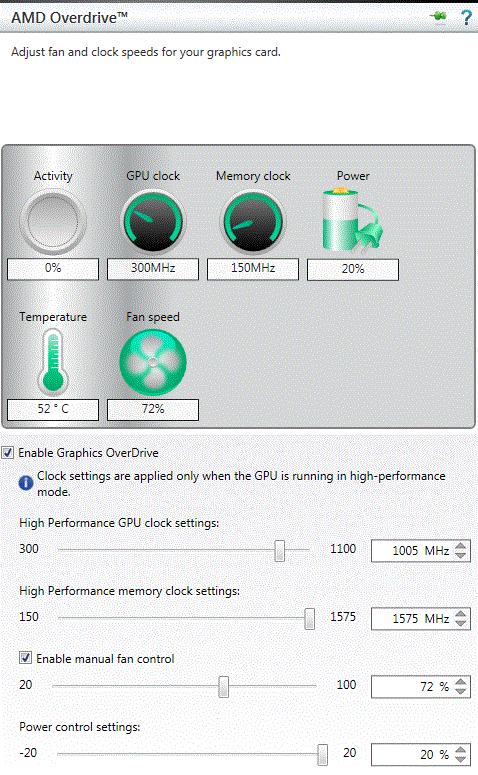Today AMD is launching Radeon HD 7950, its second card from the new Southern Island GPU family. To begin with, Southern Island family will be remembered as the first to introduce GPUs made in 28 nanometer silicon fabrication processes, first to use PCI Express 3.0 x16 bus, and first with DirectX 11.1 support. So whoops AMD did it again- it introduced a new generation of graphics card before Nvidia.
AMD decided to launch the fastest cards first, just like with the last generation. Radeon HD 7970 was released back in December and is available, so today we welcome the second fastest card from HD 7900 series - the Radeon HD 7950. According to AMD’s product transition sheet (picture below), the new card will be faster than any single GPU graphics card from the previous series, Northern Island.
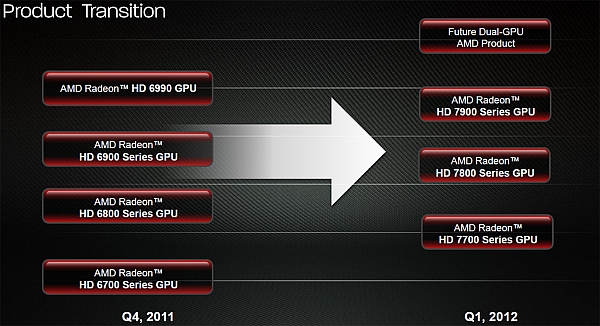
XFX’s Radeon HD 7950 Black Edition featuring Double Dissipation cooler ticks at 900MHz for the GPU, making for a nice, 100MHz overclock over reference 800MHz.
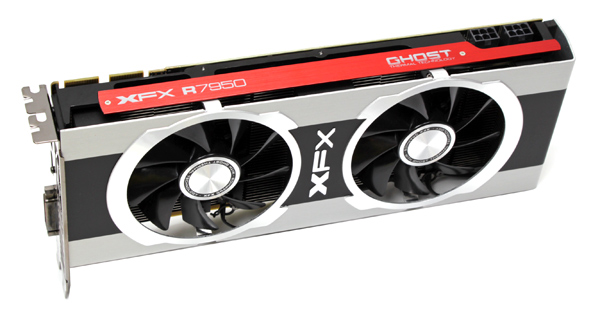
HD 7970 and HD 7950 cards are based on Cayman GPU’s successor - Tahiti.

A strict selection process is used to identify the top 1% of GPUs capable of reaching maximum overclock speeds and with help of quality Duratec components (another marketing name for high end power components) XFX claims highest performance at same power consumption as standard cards.
XFX is planning on releasing four different HD 7950 graphics cards, two of which will carry Black Edition branding. Both of these cards will also run at 900MHz but they will come strapped with different coolers. More affordable versions will feature single fan cooling.
The packaging is similar to the rest of XFX’s HD 6000/5000 offer – small and sturdy. The box features small Black Edition sign, which clearly show that the package holds one mean gaming machine.
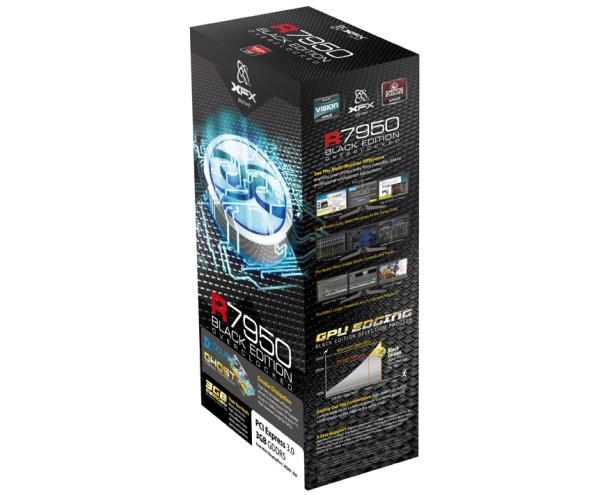
The package holds driver CD, installation guide, quick installation guide, HDMI-to-DVI adapter, CrossFire bridge, XFX's "Don't Disturb I'm Gaming" door sign nad a neat XFX Black Edition metal badge.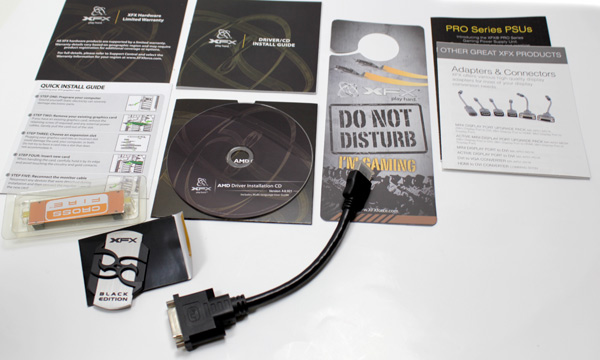
The card we’re talking about today is called Radeon HD 7950 Black Edition featuring Double Dissipation (part number FX-795A-TDBC). It’s important to differentiate this card from FX-795A-TNBC which is also called Radeon HD 7950 Black Edition but doesn’t have the Double Dissipation moniker. Both cards are identically clocked but, as you can assume, they come with different coolers. You recognize the Double Dissipation Cooler easily - it has two fans.
We must admit that XFX FX-795A-TDBC is one of the prettiest dual-fan graphics cards we’ve seen so far.

Cooler design borrows from the reference one in that it takes some of AMD’s traditional color, dual slot width and vapor chamber technology.
With the arrival HD 7900 series, XFX launched its XFACTOR 1.0 collection of features and technologie. With XFACTOR 1.0, XFX aims at the highest level of quality and innovation to ensure gamers get the best performing graphics card. Ghost Thermal technology is the key factor for better cooling. XFX opted for this technology because it allows airflow to cool the heatsink as well as the components and PCB. As you know, overheated components and PCB can also reduce performance. On the next picture you can see how the Radeon HD 7950 Black Edition (FX-795A-TNBC - single fan) manages heat dissipation.
Double Dissipation Technology is XFX’s dual fan design that allows air to cool all the heatsinks and components, as well as the PCB board itself. Unfortunately, we only have the XFX HD 7950 Black Ed. card so we cannot confirm the following comparison, but according to XFX the Double Dissipation can make a noticeable difference in performance; up to 13dBA quieter fans and up to 7°C cooler GPU.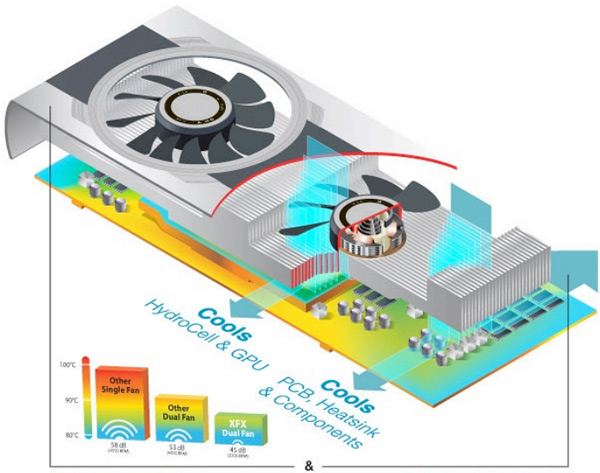

Vapor chamber technology is very popular among graphics card manufacturers because it provides performance and allows for more flexibility in designing high performance GPU coolers. XFX calls this HydroCell and it is used for both Black Edition custom coolers.

Two additional parts are classified as Duratec components: IP5X Dust Free fan and XFX Bracked Design. While we’re not convinced yet, but it is stated that XFXs bracket design can knock temperatures by up to 20% and increase airflow by up to 2x.
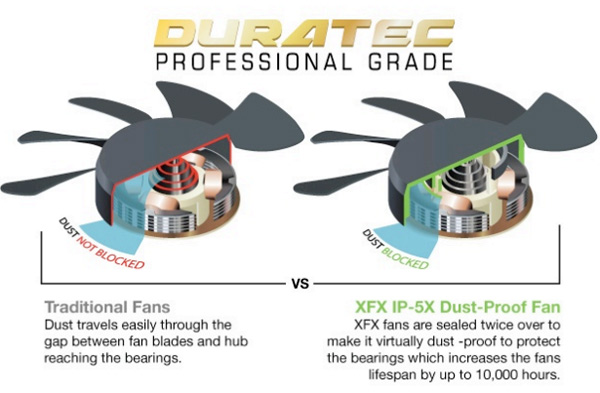
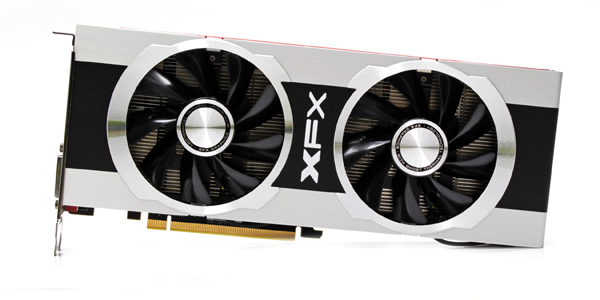
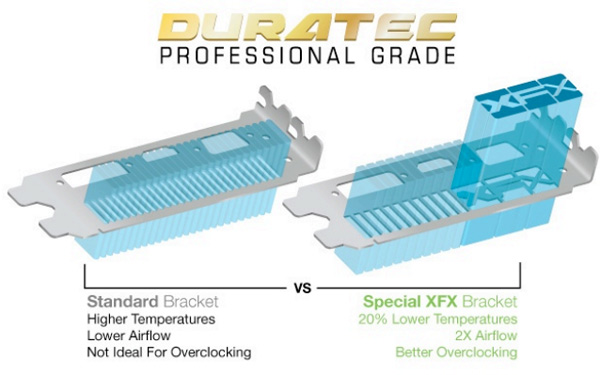
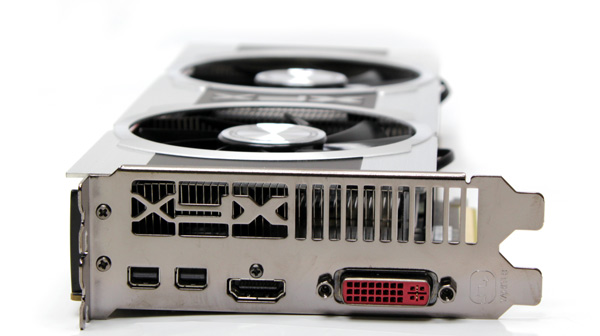
The card has one dual-link DVI out, one standard HDMI and two mini DisplayPort outs. Users will get HDMI to DVI converters, but we didn’t find any DisplayPort converters in the package.
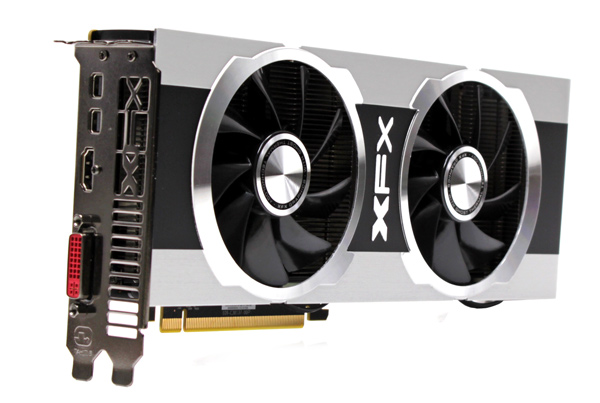
Radeon HD 7950 Black Edition draws power via two 6-pin power connectors.

The dual BIOS we’ve seen on the HD 6900 series and HD 7970 cards is not featured on XFX’s HD 7950 card. Good thing about dual BIOS is that you can switch to a different BIOS with a flick of a switch. However, installing new BIOS is done the same way which is why XFX decided to only use Standard Gamer Profile BIOS (this profile has a lower RPM profile that will run warmer but will have lower Db level on the acoustic), whereas hard core gamers who don’t care about noise can opt on Enthusiast Gamer Profile BIOS.
Registered owners of HD 7950 cards will be notified of the two BIOS options via the 5 Star Support system. It’s great that XFX made a USB_FORMAT.zip package to help make a USB stick DOSbootable in case you don't have it. There are also two additional packages,IOS_SAVE.zip a package to save current BIOS, and BIOS_FLASH.zip to update the card with newer BIOS. We tried it - it works great and is done in about a minute.
The card is 27cm long, which is the same like on the HD 7970 or GTX 570/580, whereas last year’s top model from AMD’s offer, Radeon HD 6970, measures 27.5cm.
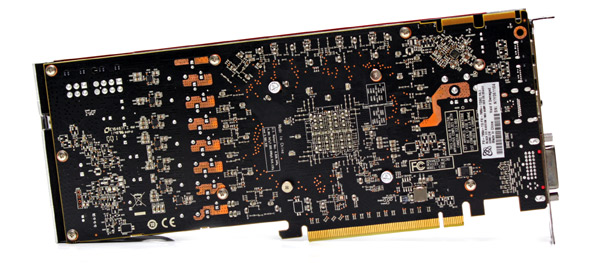
Motherboard: EVGA X79 FTW
CPU: Sandy Bridge-E Core i7 3820 (3.6GHz)
CPU Cooler: Thermalright HR-02 (Thermalright-Europa Distri www.PC-Cooling.de).
Memory: 8GB ADATA DDR3 1600 XPG Gaming series
Harddisk: OCZ Vertex 2 100 GB
Power Supply: CoolerMaster Silent Pro 1000W
Case: CoolerMaster Cosmos II Ultra Tower
Operating System: Win7 64-bit
Nvidia 285.62_desktop_win7_winvista_64bit
AMD 12.1 CCC
AMD_radeon_hd7900_win7_64
3DMark 2011 
Aliens vs Predator
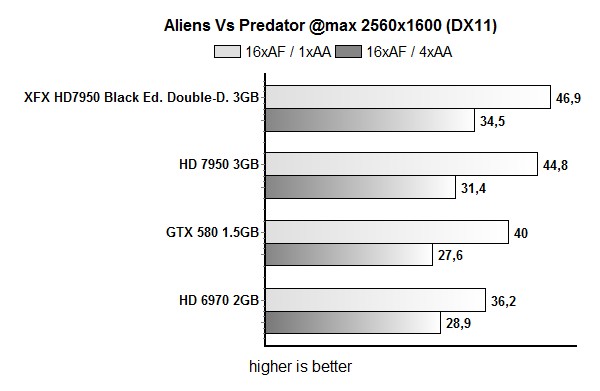
Crysis 2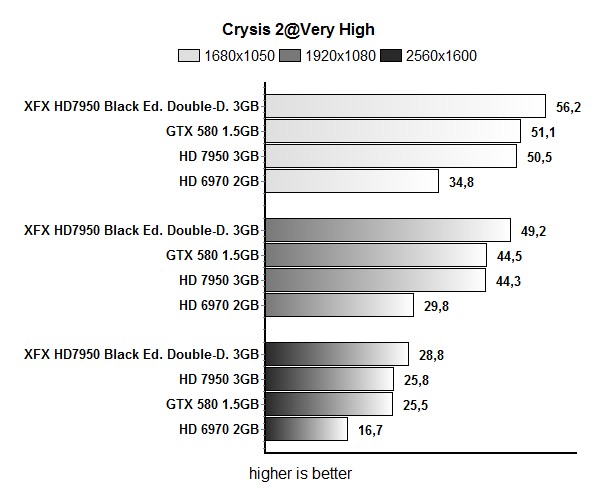
Metro 2033
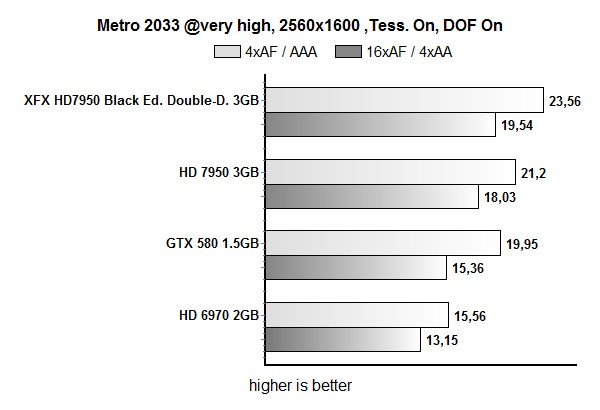
Heaven
Overclocking
XFX Radeon HD 7950 Black Edition is a factory overclocked graphics card. The GPU runs at 900MHz and the memory at 1375MHz (5500MHz effectively). Note that the standard HD 7950 card’s GPU runs at 800MHz and the memory at 1250MHz (5000MHz effectively). ATI Overdrive support GPU overclocking on the HD 7950 Black Edition card.
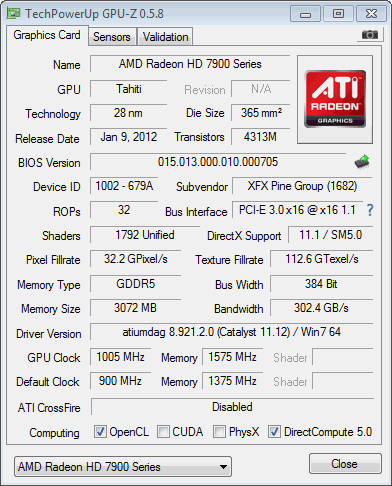
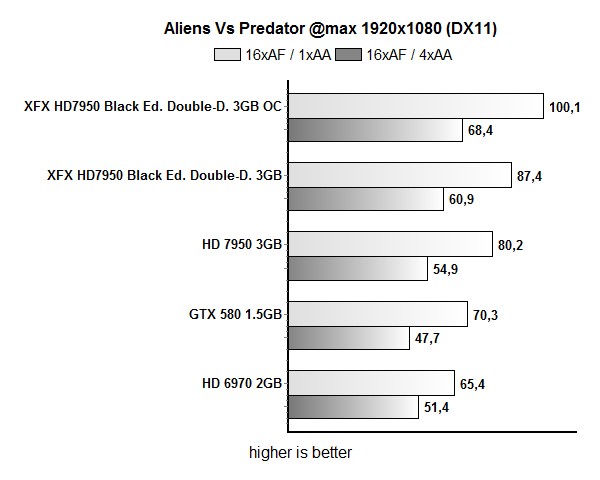
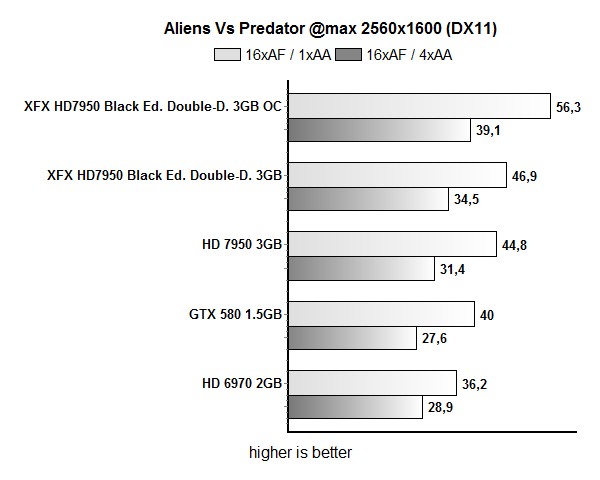
Thermals and noise
XFX fans are designed to use linear fan speed ramping controls so that fan speeds and temperatures are optimized to reduce excess noise. This helps by preventing sudden fan speed changes that tend to get loud. XFX decided to use a lower RPM profile that will run warmer, but quieter as well. However, the cooler is excellent and GPU temperature didn’t exceed 76°C.
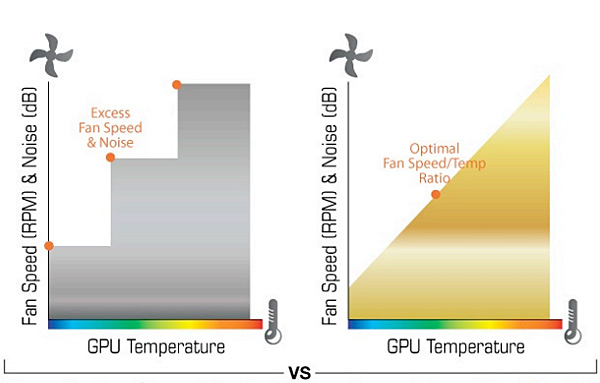

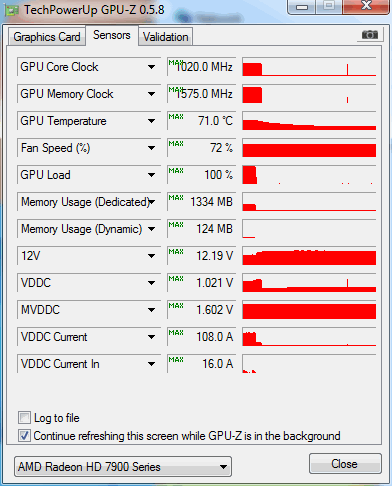
While it is not related to performance, we must say that the fans look really cool with the platinum frame.

Power Consumption
Power consumption looks good. The consumption was slightly lower than on HD 6970 cards, but it’s the performance that sets XFX Black Edition apart here. Note that GTX 580 will consume about 50W more, despite the fact that it is slower.
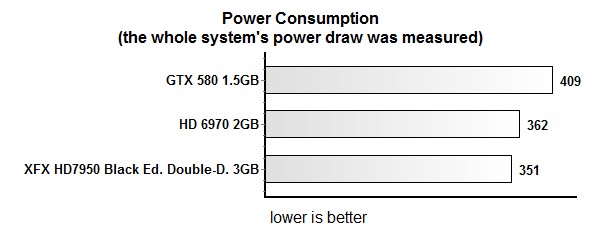
XFX Radeon HD 7950 Black Edition is faster than any single GPU graphics card launched last year, faster than the HD 6970, and faster than GTX 580. XFX helped the card along by overclocking the GPU by 100MHz, which means that it runs at 900MHz. Gaming performance will not be an issue, although utilizing full potential of the card will require gaming at 1920x1080 and higher. Apart from the great performance, our today’s Black Edition looks great and the finishing touches are clear for all to see.
AMD’s Tahiti core packs good overclocking potential, which is obvious considering the number of overclocked cards, be they 7950 or 7970. XFX also offers HD 7970 Black Edition which runs at 1GHz. We easily overclocked the Radeon HD 7950 Black Edition’s GPU by additional 105MHz.
The HD 7950 Black Edition’s cooler is called Double Dissipation, which basically means it has two fans. XFX made a good BIOS at the last moment so the card runs quietly even under load. Temperatures are great, even though the card runs higher clock speeds. The card comes with 3GB of memory, just like on HD 7970 cards.
XFX Radeon HD 7950 Black Edition Double Dissipation will set you back about $499, which is some $50 lower than the suggested HD 7970 pricing or $50 more than the HD 7950 with reference clocks and lesser cooler.




